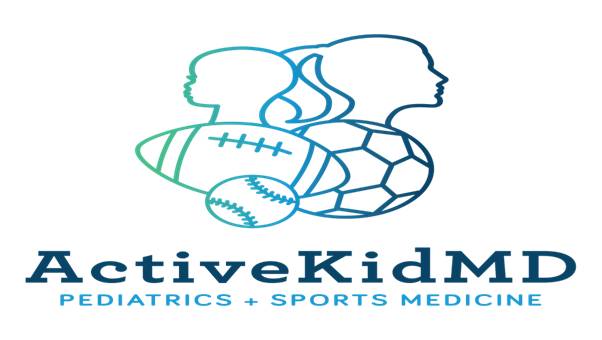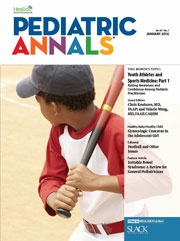But it doesn’t have to be … and really shouldn’t be … this way, stressed Chris Koutures, MD, FAAP, a board certified pediatrician and sports medicine specialist who sits on the American Academy of Pediatrics (AAP) Council on Sports Medicine & Fitness.
Instead, he continued, providers should look at the sports physical as a prime opportunity to address important issues with children, teens and parents. “There are a host of things we can look at … both sports specific and medically in general,” he said. “Every opportunity we get to sit down with a family is a chance to educate … whether with a sports physical or routine physical.”
Koutures, who is based in Anaheim Hills, Calif., is co-author of “Pediatric Sports Medicine: Essentials for Office Evaluation” and served as medical team physician for USA Volleyball and Table Tennis at the 2008 Beijing Summer Olympics. He pointed out providers have the opportunity to not only identify and fix current problems but to delve deeper to discover and address underlying issues that could prevent or reduce the impact of future injuries or illness. “One thing that pediatricians and primary care providers do so well is anticipatory guidance,” he said.
Koutures said there are a host of reasons families rely on retail clinics for a sports physical ranging from convenience to cost to the drop-in nature of such facilities. However, he pointed out, seeing your regular provider has a value-added proposition that shouldn’t be ignored. “If we do our job right, we are providing such a higher level of care,” he said. “If you have a relationship with that family, you can look at past history. We can see a history of asthma. We can look at a growth scale and see if there’s been a tremendous amount of growth. We can see immunization records,” Koutures enumerated.
He added the long checklist of issues, ailments and conditions on sports medicine forms makes it easy to simply answer ‘no, no, no’ to everything. However, those answers aren’t always accurate … whether by accident, oversight, or fear of being sidelined.
“You look at the sheet, and it says ‘no history of asthma.’ Really? There was an episode two years ago,” Koutures outlined an example of the benefit of going to a provider who knows a child’s history. “If you know the child has asthma, they can actually have a better sports experience because you are addressing and controlling the issue.”
He added, “Having that background knowledge is one more checkpoint to making sure we’re giving the best care we can.”
As important as it is to use the time to educate young athletes and their families about issues ranging from nutrition and hydration to concussion and overuse, Koutures said a sports physical is also a great time to listen. Particularly with older adolescents where part of the appointment is without the parent, Koutures said it’s a great time to open dialogue about alcohol, drugs and supplements and to allow kids to ask questions. “We need to take the time to educate ourselves,” he added of hearing a patient’s thoughts and concerns.
Listening, he continued, also plays an important role in an area where he believes providers could do a better job – assessing and addressing mental health issues. “It’s a silent epidemic,” Koutures noted of the number of adolescents feeling overwhelmed, anxious or depressed.
“If you get that one time a year to sit down with a family and address these things, you can make a big impact,” Koutures concluded of the sports physical. But, he added, “That’s not going to happen in 10 minutes.”
RELATED LINK:
AAP Council on Sports Medicine & Fitness:
https://www.aap.org/en-us/about-the-aap/Committees-Councils-Sections/Council-on-sports-medicine-and-fitness/Pages/default.aspx
Addressing Common Questions & Concerns
Pediatric sports medicine specialist Chis Koutures, MD, FAAP, shared insights and advice on several common questions and concerns parents might have regarding their active offspring.
How Much is Too Much?
“The minimum the American Academy of Pediatrics recommends is one day off a week from organized activity,” Koutures said.
Furthermore, he continued, there are additional time limits on adult-directed activity that should be considered. “If you take the age of a child, that’s the number of hours of organized activity they should not exceed in a week,” he said of recommendations based on new data. Therefore, a 12-year-old shouldn’t participate in more than 12 hours of organized sports and practices in a week. However, Koutures stressed, this time limit doesn’t apply to additional free play with friends.
Overuse
“I think we’re seeing more overuse injuries,” Koutures said. In part, he thinks the increase is due to more children becoming one-sport athletes, which leads to repetitive motion. He added that when a child plays a number of sports, different muscle groups are engaged, and children mentally learn different movement patterns.
While physicians might not be able to change a child’s activity preferences, they can help mitigate overuse injuries through evaluation and education. “With my throwing athletes, I look at the shoulder range of motion. There are great studies that show if we can make sure they have appropriate follow through, we can reduce the risk of injury,” he pointed out.
Hydration & Nutrition
Koutures noted the AAP released a statement on sports drinks several years ago. “The belief is that for most times, water is sufficient,” he said. Koutures added that a sports drink might be appropriate when exercising for over an hour, particularly if it is hot and humid, or right after an activity to replace salt and sugar.
“We like to think of hydration as being a full time job,” he continued, noting proper hydration doesn’t occur during the small window of practice or playing. Instead, children should be drinking water regularly to prepare for … and recover from … activity.
He also tells young athletes to look at their urine to gauge their level of hydration. “If it’s really dark, that’s a sign of dehydration,” Koutures reminds them.
As for pre-activity nutrition, he said that somewhat depends on the child, time of day and personal preference or tolerance. Recognizing some kids really can’t eat much shortly before competition, he suggested trying fruit because of the liquids and quick energy it provides.
“The most important meal of the day isn’t breakfast, lunch or dinner,” he continued, “It’s what you eat right after you exercise. Getting some sort of protein mixed with carbohydrates in that first half hour after you exercise is essential for recovery.” Koutures added chocolate milk has a great protein-to-carb balance. Greek yogurt and peanut butter are also good options.























